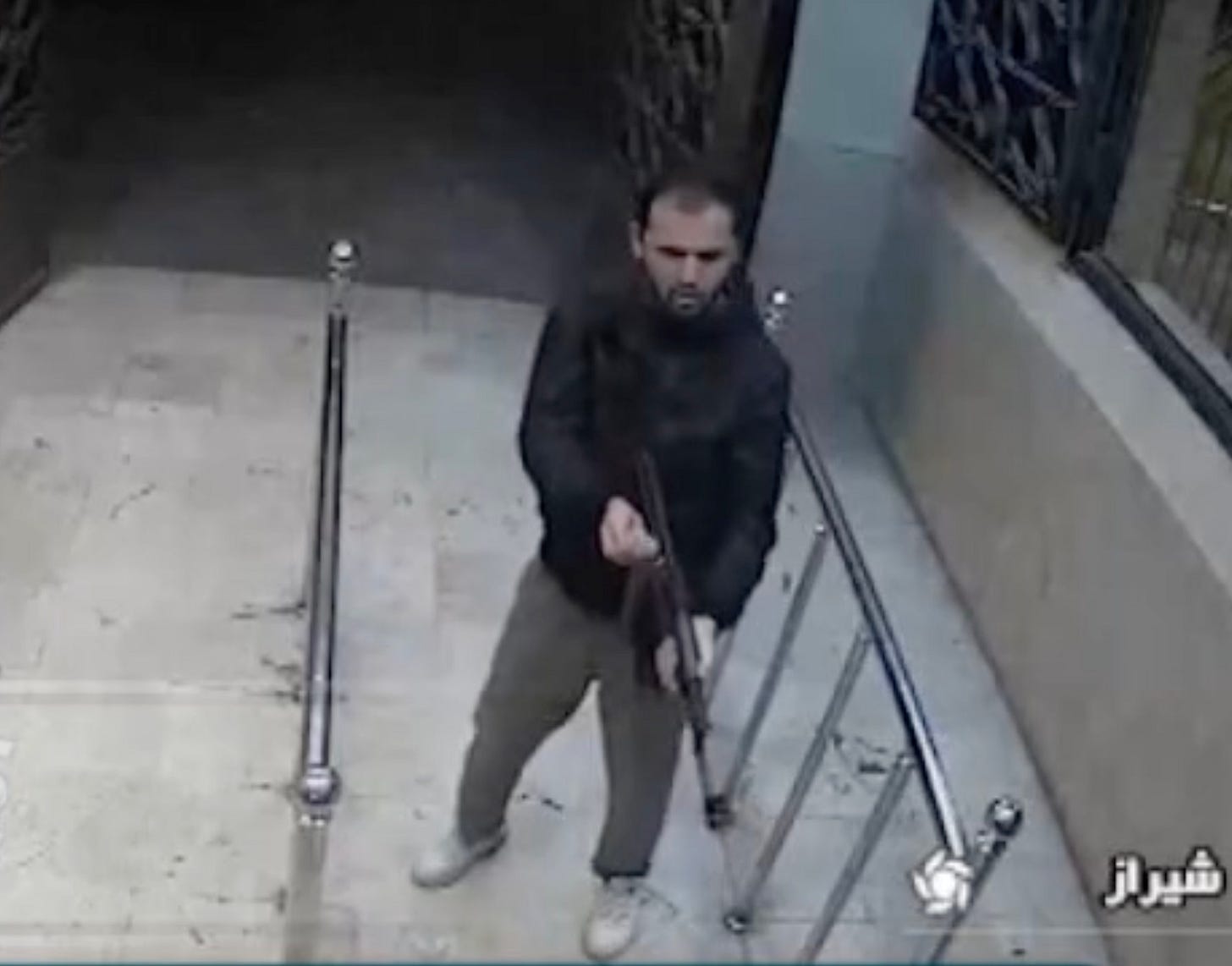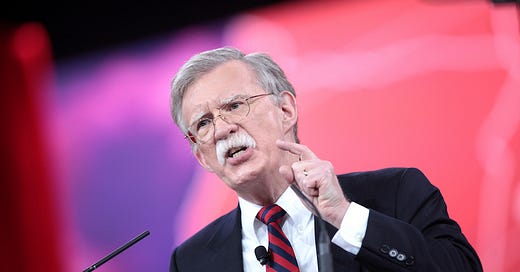Don’t close your eyes to the US proxy war being waged against Iran
The CIA, Mossad and other Western spy agencies are using Iran's riots as cover for war.

With the Islamic Republic of Iran doing better than expected at this year’s football world cup, there has been a lot of disparaging commentary among Western sports journalists.
One BBC commentator during the Wales-Iran match on Friday described the latter as “a nation in turmoil.” Yet he neglected to mention the causes of that “turmoil.”
It’s probably for the best that he didn’t make the effort, as I doubt the result would have been any more enlightening.
Western media coverage of events in Iran since September has been misleading at best and intelligence agency disinformation at worst (more often than not it has been the latter). Unfortunately this is par for the course when it comes to British and American media coverage of official enemy states like Iran. The coverage is so distorted as to be worse than useless.
Almost entirely missing from the misleading narrative of a brave national protest movement crying “woman, life, freedom,” is one simple fact — the same Western intelligence agencies setting so much of the media narrative are also leading a low-intensity proxy war against Iran.
The protest movement, such as it is, has been used as a cover by the armed terrorist groups currently attacking the country. In essence, this is an attempt by the CIA, MI6 and Israel’s Mossad to repeat the same strategy of proxy war that they carried out in Syria beginning in 2011.
That proxy war did not succeed in its maximalist aim of destroying the Syrian state and toppling its government. But it did result in the US occupation of a large swathe of Syria’s oil-rich north-eastern region and a new American military base. This occupation has been instrumental in the empire’s current ongoing theft of Syrian oil, smuggling it across the border to US military bases in Iraq.
If we genuinely want to understand the causes of the current “turmoil” in Iran, we need to take a sober look at recent events on the ground.
On 26 October there was a massacre in the Shah Cheragh mosque in the southern city of Shiraz. CCTV footage showed a man armed with an AK47 mercilessly gunning down worshippers.
The massacre bore all the hallmarks of an attack by ISIS. Don’t forget that the birth of ISIS in Iraq was not only triggered by the US invasion of Iraq, but was deliberately cultivated in Syria by US intelligence agencies in order to fight against the government. One Israeli think tank even called ISIS a “useful tool” in the war against Iran.

ISIS claimed responsibility for the massacre. There were 15 people murdered (including two children) and 40 injured in the attack. Authorities arrested 26 foreign nationals thought to be involved.
Iranian authorities later revealed that they had foiled a second attack that day in the same city. As bad as it was, it could have been a whole lot worse: a bomb elsewhere in the city was discovered and defused.
Of course, peaceful protesters with legitimate grievances are not to blame for the attacks of a few extremists. But it would be foolishly naive to imagine that there is no connection between the suspiciously sudden upswing in armed attacks and the increasingly violent riots that have plagued the country since September.
Yes there have been protests against the government, but they are nowhere near as widespread as suggested by misleading Western media accounts. And there have also been very large pro-government protests, mostly ignored by the Western media. These are ordinary people who have come out to express their disgust at the violent riots, and their opposition to the murder of both civilians and police.


The same day as the mosque attack there was a protest in the northern city of Saqez (the hometown of Mahsa Amini, the young woman whose tragic death has gained so much attention since September). There was also some small scattered riots in Tehran, where the “protesters” reportedly set fire to public property and chanted “this year is a year of blood.”
A week after the ISIS attack in Shiraz, terrorists struck again, in the eastern city of Zahedan. Muslim cleric Sajjad Shahraki was shot dead by unidentified gunmen. Dozens have died in the unrest since September, many of them police and other government forces.
As well as ISIS (which Iran played the leading role in defeating in Syria) Iran faces threats by various other armed militias — terrorist groups like the Mujahedin-e-Khalq (MEK) as well as as Kurdish separatist groups.
In a typically candid interview with BBC Persia recently, former US national security advisor John Bolton (a notorious neoconservative warmonger) openly boasted that weapons are being smuggled into Iran over the border from Iraqi Kurdistan. Bolton also told the BBC he wants to see “regime change” in Iran.
Old habits die hard. Bolton’s infamous involvement in the Iraqi regime change operation of 2003 resulted in at least a million dead Iraqis, a devastating civil war that lasted years and the birth of ISIS.
Of course the liberal imperialists are just as bad. US president Joe Biden (who seems to be experiencing swift cognitive decline) once again said too much and promised to “free Iran” from its government. His spin doctors were quick to go into damage control mode and reverse his statement.
But it was a clear indication: the US is going all out for regime change in Iran, and is running a proxy war against the country just as it did in Syria, where the CIA spent at least $1 billion on trying to destroy the country using all means.
And just as in Syria, the US is not the only foreign country involved.
The Saudis are deploying their formidable fake-news machine to incite the rioters. It was the Saudi funded (and UK based) Iran International which was the origin of the preposterous — yet widely accepted in the West — lie that Iran had sentenced 15,000 protestors to death. Canadian prime minister Justin Trudeau had to delete a tweet in which he had promoted the obviously fake news story, and several other Western celebrities were similarly duped.
And then there is Israel.
The Islamic Republic of Iran, since its foundation in 1979, has supported the cause of Palestinian liberation. But rather than just spouting empty words, Iran actually sends weapons to Palestinian groups, allowing them to defend their people against Israeli aggression. For this reason, Israel has been in a long-running war against Iran. It has repeatedly murdered Iranian scientists, sometimes doing so by working in collusion with the MEK terrorist cult.
It’s no surprise to learn then, that Israel is involved in the current disturbances.
Back in March a US official revealed to the New York Times that Israel’s deadly Mossad spying and assassination agency had set up shop in Erbil, the capital of Iraq’s northern Kurdish region. Again going into damage control mode, a second US official later denied this.
But speaking to The Cradle, a spokesman for the Patriotic Union of Kurdistan (a leading Kurdish separatist group in Iraq) confirmed that “there is – among others – an Israeli Mossad presence. And this presence provokes Iran into attacking their sites in the Kurdistan region.” Iran had struck an Israeli training facility in Erbil with ballistic missiles, leading to the US denial that they had hit a consulate building in the first place.
There seems no doubt that the Israelis — just like the Americans — are doing their best to foment a “Colour Revolution” in Iran and are helping to arm the terrorists and stoke the rioters. Last month Iranian authorities arrested 10 Mossad agents, accusing them of attempts to carry out sabotage and assassinations operations. Fars News Agency reported that the group had had direct contact with Tel Aviv and had set fire to cars and houses.
The rioters do indeed seem to be getting increasingly violent, likely frustrated at their failure to inspire a mass uprising against the government. On 3 November armed rioters killed one member of the IRGC military auxiliary basij force and seriously injured four police officers. Ruhullah Ajami, the basij member, was stabbed to death.
The Cradle reported that: “Around the same time as the attacks, heavy traffic was reported in both lanes of the Karaj-Qazvin freeway, where a mob of an estimated 500 rioters tried to block the roads. They threw stones and attacked passing cars that refused to stop at their request.”
Despite the constant predictions about the imminent “fall of the regime,” Mohammad Marandi — a professor of English literature and Orientalism at the University of Tehran, and an astute commentator on Western hypocrisy — says that the Iranian government has a large degree of popular legitimacy.
As he observed in this recent interview with BreakThrough News, Western media have been wrongly predicting the Iranian government’s fall for many years. He once appeared on Fareed Zakaria’s TV show, where he was called “a mouthpiece of a dying regime.”
Thirteen years later, the Islamic Republic of Iran is still here.
All of this is very much reminiscent of Syria.
There are of course, legitimate objections to the policies of the Iranian government and the country is beset by internal problems. Which country isn’t? But that doesn’t mean we should fall for the Western media propaganda which is trying to manufacture consent for a regime change war against yet another sovereign country overseas.
Don’t close your eyes to the fact that there is a proxy war being waged against Iran.





Well said. Well written.
Comprehensive and detailed article
Congratulations, you pointed out the facts very well